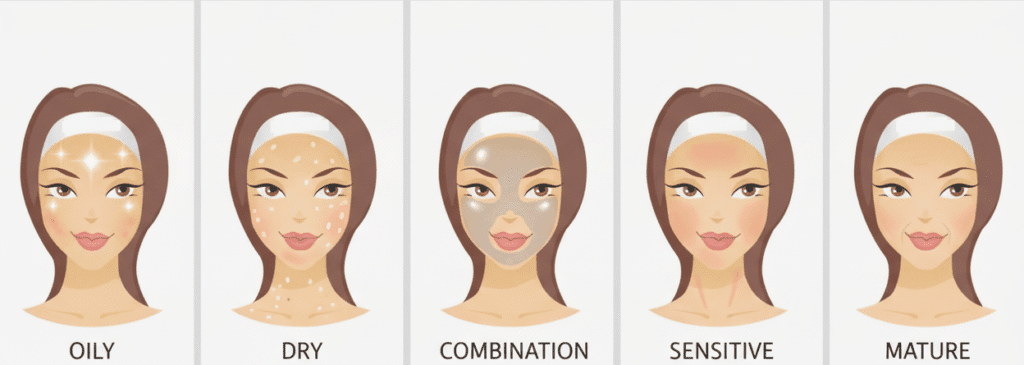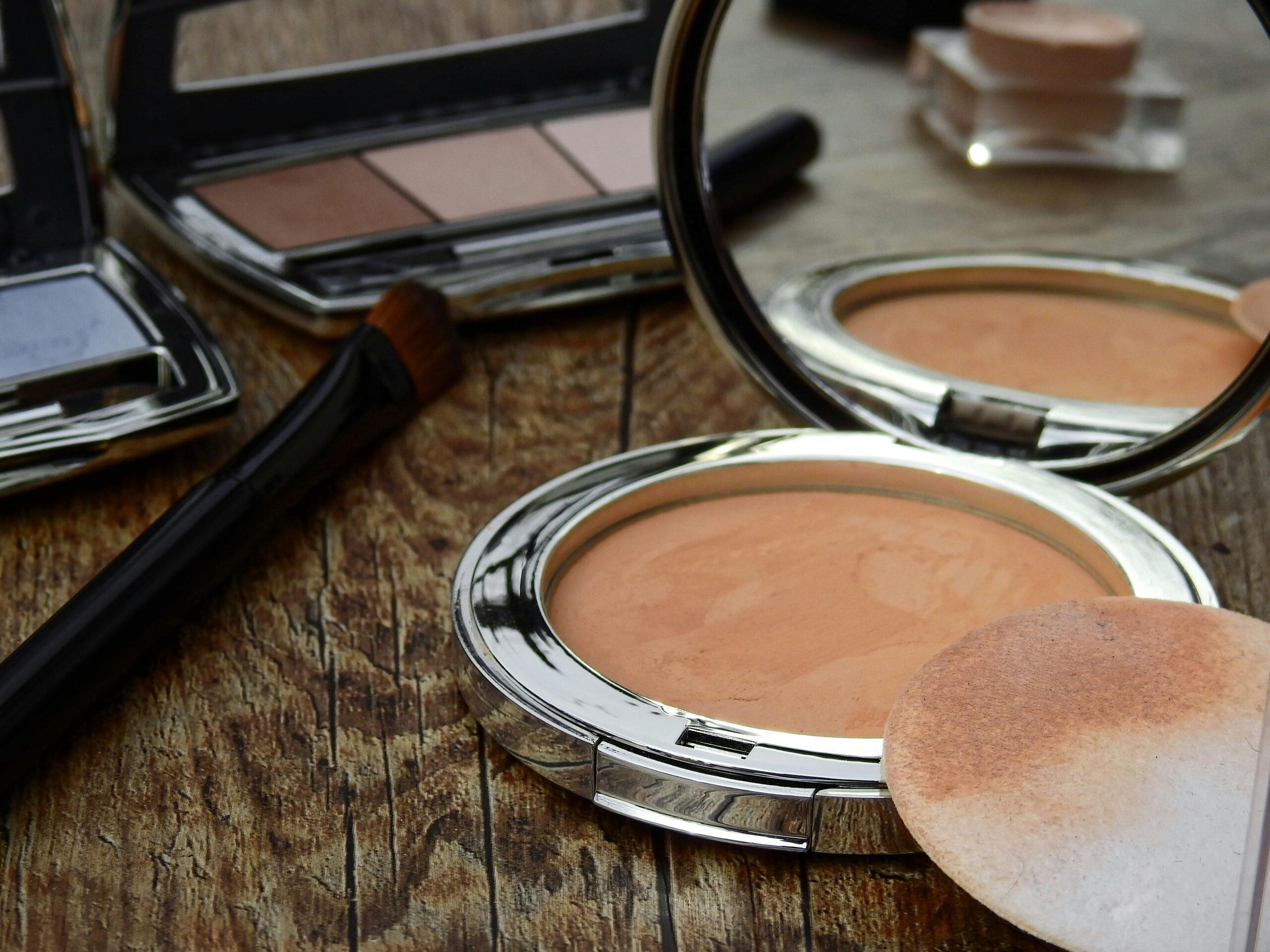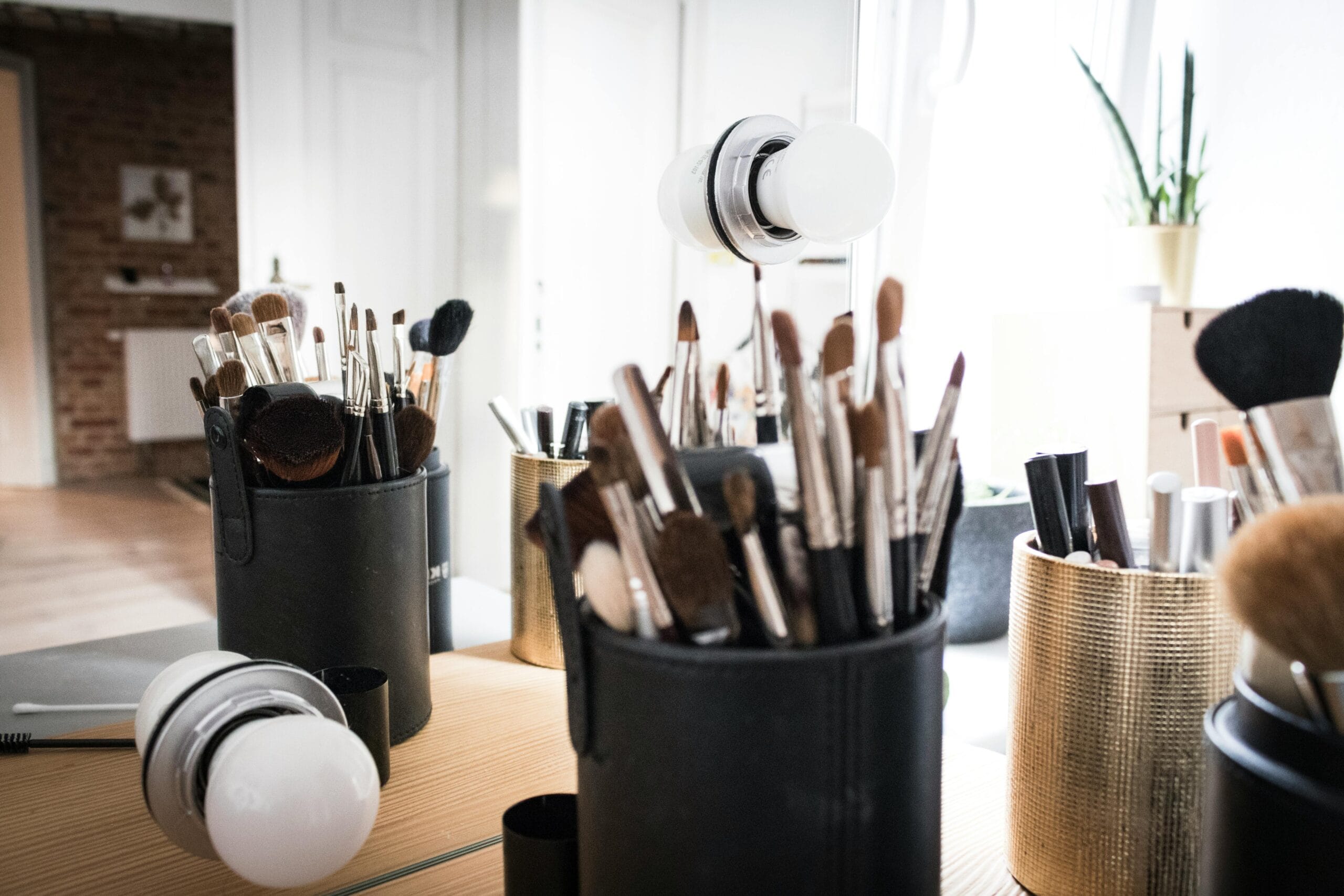Finding the right foundation can feel like searching for a needle in a haystack—but it doesn’t have to! The key is matching your skin type and concerns to the formula, finish, and coverage that work best. Here’s your foolproof guide to selecting a foundation that looks like second skin.
1 Identify Your Skin Type
Foundation formulas perform differently depending on your skin’s needs.
✔ Skin type cheat sheet:

- Oily: Shiny T-zone, enlarged pores, prone to breakouts.
- Dry: Flaky patches, tightness, dullness.
- Combination: Oily T-zone with dry cheeks.
- Sensitive: Redness, irritation, reacts easily.
- Mature: Fine lines, loss of elasticity, uneven texture.
💡 Pro Tip: Test your skin type by washing your face, waiting 30 minutes, and observing oil/dryness.
2 Oily Skin: Matte, Oil-Free Formulas
Avoid shine and clogged pores with lightweight, long-wear foundations.
✔ Best picks:
| Liquid: Oil-free, non-comedogenic formulas (e.g., Estée Lauder Double Wear). | Powder: Mineral-based for touch-ups (e.g., MAC Studio Fix Powder). |
- Application: Use a flat brush or sponge to press product into skin.
3 Dry Skin: Hydrating, Dewy Foundations
Look for moisturizing ingredients to prevent flakiness.
✔ Best picks:
| Cream: Hyaluronic acid-infused (e.g., IT Cosmetics CC+ Cream). | Liquid: Radiant or satin finish (e.g., L’Oréal True Match Lumi). |
- Application: Mix with a drop of facial oil for extra glow.
4 Combination Skin: Balanced Formulas
Target oily and dry zones with a versatile foundation.
✔ Best picks:
| Water-based: Lightweight and buildable (e.g., Fenty Beauty Pro Filt’r Soft Matte). | Serum foundations: Adjust coverage without heaviness (e.g., Ilia Super Serum Skin Tint). |
- Application: Set only the T-zone with translucent powder.
5 Sensitive Skin: Fragrance-Free, Hypoallergenic
Avoid irritants that trigger redness or breakouts.
✔ Best picks:
| Mineral foundation: Zinc oxide or titanium dioxide (e.g., BareMinerals Original). | Cushion compacts: Gentle, buildable coverage (e.g., Laneige BB Cushion). |
- Application: Patch-test new formulas on your jawline first.
6 Mature Skin: Lightweight, Luminous Formulas
Skip heavy textures that settle into wrinkles.
✔ Best picks:
| Tinted moisturizer: Sheer, hydrating (e.g., NARS Pure Radiant Tinted Moisturizer). | Liquid with peptides: Boosts collagen (e.g., Giorgio Armani Luminous Silk). |
- Application: Use a damp sponge to blend and avoid tugging.
7 Test Shades in Natural Light
The right shade disappears into your skin.
✔ How to test:
| Swatch 3 shades on your jawline. | Check in sunlight—indoor lighting distorts color. |
- Let it oxidize for 10 minutes before deciding.
Match Your Undertone
Foundations with the wrong undertone look ashy or orange.
✔ Undertone guide:
| Cool: Pink or red hues (veins appear blue). | Warm: Golden or yellow hues (veins appear green). | Neutral: Mix of pink and yellow (veins appear teal). |
💡 Pro Tip: If unsure, choose a neutral undertone—it adapts to most complexions.
Consider Coverage Needs
Tailor coverage to your lifestyle and preferences.
✔ Coverage guide:
| Sheer: Evens tone without masking freckles (ideal for “no-makeup” days). | Medium: Covers redness and minor imperfections. | Full: Camouflages scars, hyperpigmentation, or acne. |
Don’t Forget the Finish
The finish impacts how natural or polished your skin looks.
✔ Finish types:
| Matte: Oil-free, shine-free (great for oily skin). | Dewy: Luminous, hydrating (perfect for dry skin). | Satin: Natural, semi-matte (versatile for most types). |
More
The perfect foundation should enhance your skin, not hide it. Focus on your skin type, undertone, and desired finish—and don’t be afraid to ask for samples! Our Tip: Always prep skin with moisturizer and primer to ensure a smooth, long-lasting base. With these guidelines, you’ll find your holy grail match in no time! 💄✨



